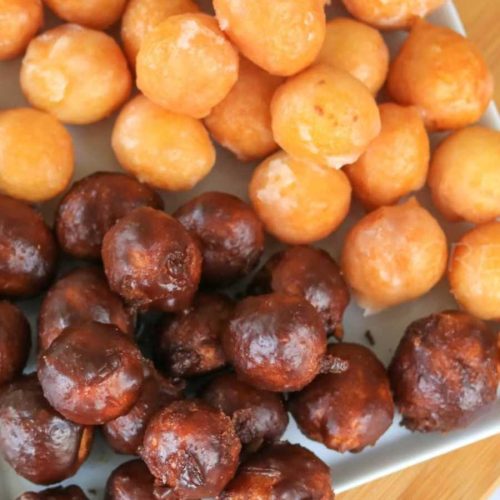ADVERTISEMENT
If you’ve ever craved a delightful treat that’s a perfect blend of soft and crispy, look no further than Taiwanese Donuts. These heavenly delights boast an irresistibly fluffy interior encased in a golden, crispy exterior. Let’s dive into the world of Taiwanese Donuts, exploring the magic of making them at home, and discovering answers to some frequently asked questions.
One of my favorite desserts is Taiwanese Donuts, which are fluffy on the inside, and crispy on the outside.
ADVERTISEMENT
There’s something truly magical about the contrast in textures when biting into a Taiwanese Donut. The outer layer offers a satisfying crunch, giving way to a pillowy-soft interior. These donuts, also known as “Youtiao” or “Chinese crullers,” have become a beloved street food snack and breakfast item, adored for their simple yet delightful flavors.
My go-to recipes that you will LOVE!
Creating the perfect batch of Taiwanese Donuts at home may seem like a culinary adventure, but fear not – we’ve got you covered with some tried-and-true recipes. Whether you’re a seasoned baker or a novice in the kitchen, these recipes will guide you to achieve that ideal balance of fluffiness and crispiness. From mastering the dough to achieving the perfect fry, these recipes ensure success.
I highly recommend enjoying Taiwanese Donuts while they are hot and fresh!
While it may be tempting to savor Taiwanese Donuts at any time, there’s truly nothing like indulging in them when they are hot and fresh out of the fryer. The heat intensifies the donuts’ crispiness, and the steam trapped within the fluffy interior enhances the overall experience. Serve them alongside your favorite dipping sauces, be it sweet or savory, and savor the magic of a perfectly prepared Taiwanese Donut.
Frequently Asked Questions
1. Can I make the dough ahead of time and refrigerate it?
- Yes, you can prepare the dough in advance and refrigerate it overnight. This allows for a slow rise, enhancing the flavor. When ready to fry, let the dough come to room temperature before shaping and frying.
2. What is the best oil for frying Taiwanese nuts?
- A neutral oil with a high smoke point, such as vegetable oil or peanut oil, is ideal for frying. Make sure to maintain a consistent temperature to achieve that coveted crispy texture.
3. Can I freeze the uncooked dough for later use?
- Yes, you can freeze the uncooked dough. Divide it into portions, wrap each portion tightly in plastic wrap, and store it in a sealed freezer bag. Thaw in the refrigerator before bringing it to room temperature for frying.
4. How do I achieve the perfect puffiness in the donuts?
- To ensure a fluffy interior, make sure the dough has undergone sufficient proofing. Allow it to rise until doubled in size, and avoid overcrowding the frying pan to allow the donuts to puff up beautifully.
5. Are Taiwanese Donuts only sweet, or can they be savory?
- While traditional Taiwanese Donuts are often enjoyed with sweet condiments, you can certainly explore savory variations. Serve them with soy milk, or congee, or pair them with savory dipping sauces for a delightful twist.
In conclusion, Taiwanese Donuts offers a delightful culinary journey, bringing together the joy of creating them at home and the pleasure of indulging in their unique textures and flavors. Whether you’re a fan of sweet or savory, these fluffy delights are sure to become a favorite treat for any occasion.

Taiwanese Donuts (Super Fluffy!)
Ingredients
- •4 cups flour
- •6 tsp baking powder
- •1 tsp salt
- •5 tablespoons sugar
- •1 and 1/2 cups warm water
Instructions
- Heat a deep pan with vegetable oil over medium heat.
- In a large bowl, mix all ingredients into a batter.
- On a floured surface, shape the dough into a thick circle, then use a cookie cutter for even circles or form balls with floured hands.
- Fry in hot oil until golden brown on one side.
- Turn over and fry until golden brown on the other side.
- Transfer to a bowl lined with paper towels after frying.
- Allow to cool slightly and serve with sweet tea or coffee. Enjoy!
ADVERTISEMENT

